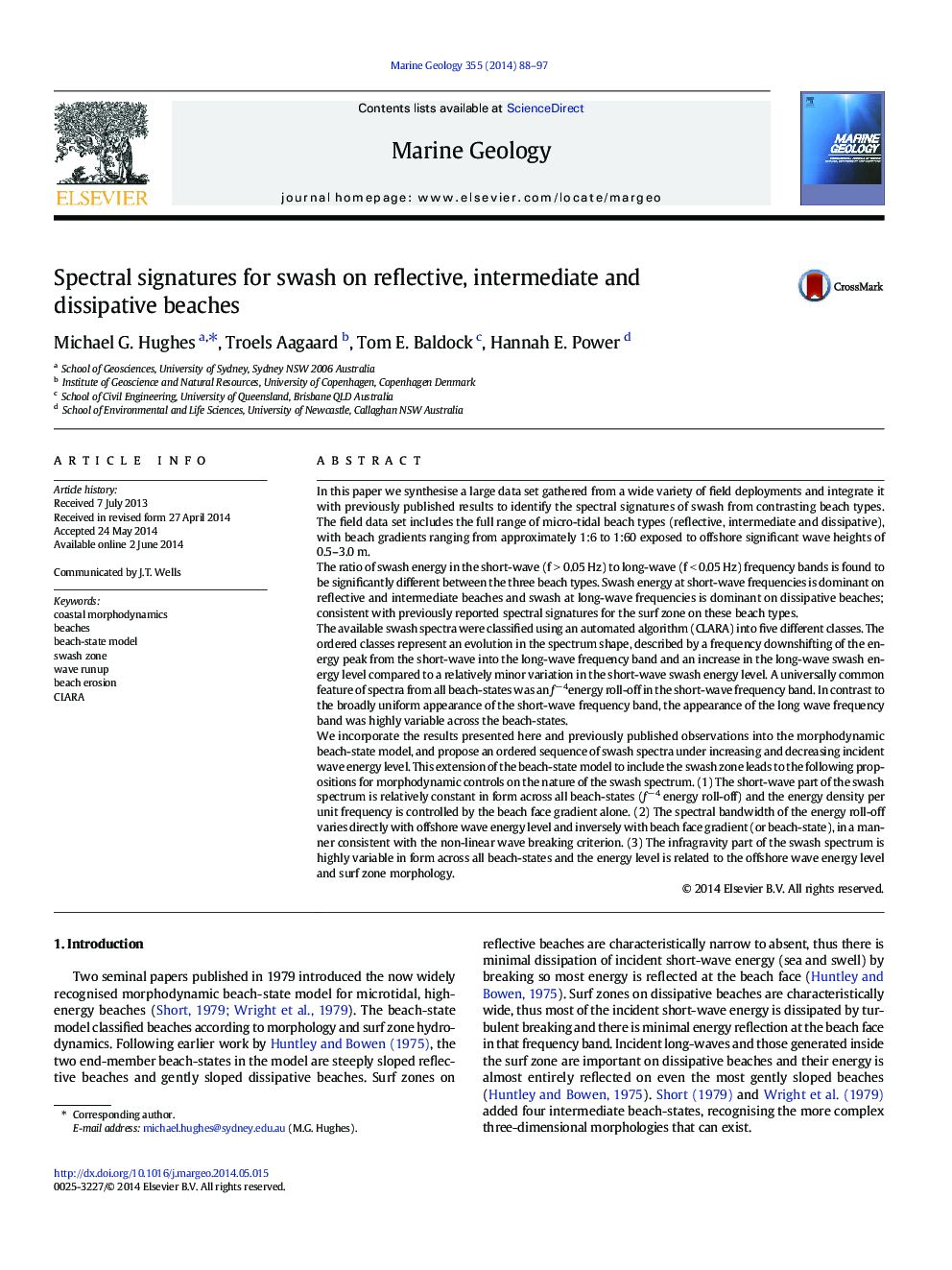| کد مقاله | کد نشریه | سال انتشار | مقاله انگلیسی | نسخه تمام متن |
|---|---|---|---|---|
| 4718265 | 1639097 | 2014 | 10 صفحه PDF | دانلود رایگان |
• Ratio of swash energy in the short and long wave bands varies with beach state.
• Several other features of swash spectra scale with beach face gradient.
• Morphodynamic controls on swash behaviour and spectral characteristics identified.
• Swash spectral signatures incorporated into the morphodynamic beach state model.
In this paper we synthesise a large data set gathered from a wide variety of field deployments and integrate it with previously published results to identify the spectral signatures of swash from contrasting beach types. The field data set includes the full range of micro-tidal beach types (reflective, intermediate and dissipative), with beach gradients ranging from approximately 1:6 to 1:60 exposed to offshore significant wave heights of 0.5–3.0 m.The ratio of swash energy in the short-wave (f > 0.05 Hz) to long-wave (f < 0.05 Hz) frequency bands is found to be significantly different between the three beach types. Swash energy at short-wave frequencies is dominant on reflective and intermediate beaches and swash at long-wave frequencies is dominant on dissipative beaches; consistent with previously reported spectral signatures for the surf zone on these beach types.The available swash spectra were classified using an automated algorithm (CLARA) into five different classes. The ordered classes represent an evolution in the spectrum shape, described by a frequency downshifting of the energy peak from the short-wave into the long-wave frequency band and an increase in the long-wave swash energy level compared to a relatively minor variation in the short-wave swash energy level. A universally common feature of spectra from all beach-states was an f− 4energy roll-off in the short-wave frequency band. In contrast to the broadly uniform appearance of the short-wave frequency band, the appearance of the long wave frequency band was highly variable across the beach-states.We incorporate the results presented here and previously published observations into the morphodynamic beach-state model, and propose an ordered sequence of swash spectra under increasing and decreasing incident wave energy level. This extension of the beach-state model to include the swash zone leads to the following propositions for morphodynamic controls on the nature of the swash spectrum. (1) The short-wave part of the swash spectrum is relatively constant in form across all beach-states (f− 4 energy roll-off) and the energy density per unit frequency is controlled by the beach face gradient alone. (2) The spectral bandwidth of the energy roll-off varies directly with offshore wave energy level and inversely with beach face gradient (or beach-state), in a manner consistent with the non-linear wave breaking criterion. (3) The infragravity part of the swash spectrum is highly variable in form across all beach-states and the energy level is related to the offshore wave energy level and surf zone morphology.
Journal: Marine Geology - Volume 355, 1 September 2014, Pages 88–97
